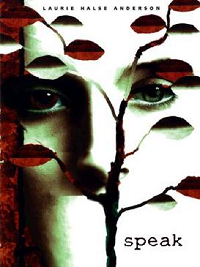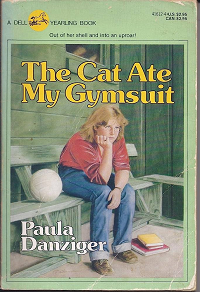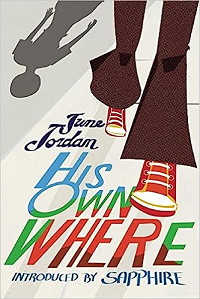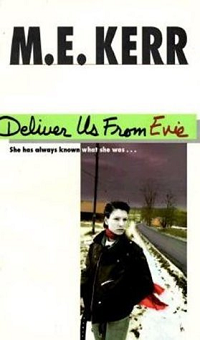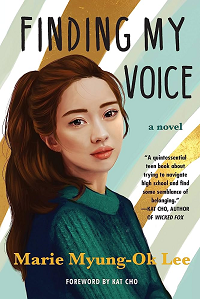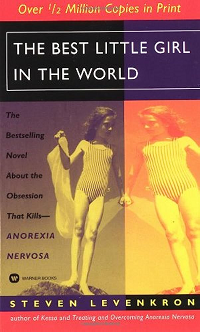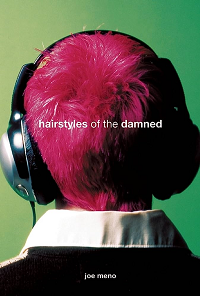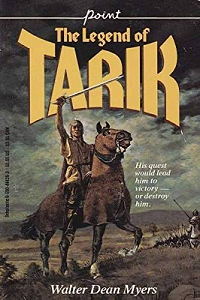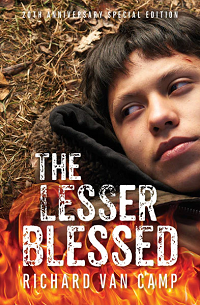
This content contains affiliate links. When you buy through these links, we may earn an affiliate commission.
Kristian Wilson Colyard grew up weird in a one-caution-light town in the Appalachian foothills. She now lives in an old textile city with her husband and their clowder of cats. She’s on Twitter @kristianwriting, and you can find more of her work online at kristianwriting.com.
View All posts by K.W. Colyard
Kristian Wilson Colyard grew up weird in a one-caution-light town in the Appalachian foothills. She now lives in an old textile city with her husband and their clowder of cats. She’s on Twitter @kristianwriting, and you can find more of her work online at kristianwriting.com.
View All posts by K.W. Colyard
Kristian Wilson Colyard grew up weird in a one-caution-light town in the Appalachian foothills. She now lives in an old textile city with her husband and their clowder of cats. She’s on Twitter @kristianwriting, and you can find more of her work online at kristianwriting.com.
View All posts by K.W. Colyard
Kristian Wilson Colyard grew up weird in a one-caution-light town in the Appalachian foothills. She now lives in an old textile city with her husband and their clowder of cats. She’s on Twitter @kristianwriting, and you can find more of her work online at kristianwriting.com.
View All posts by K.W. Colyard
Kristian Wilson Colyard grew up weird in a one-caution-light town in the Appalachian foothills. She now lives in an old textile city with her husband and their clowder of cats. She’s on Twitter @kristianwriting, and you can find more of her work online at kristianwriting.com.
View All posts by K.W. Colyard
Kristian Wilson Colyard grew up weird in a one-caution-light town in the Appalachian foothills. She now lives in an old textile city with her husband and their clowder of cats. She’s on Twitter @kristianwriting, and you can find more of her work online at kristianwriting.com.
View All posts by K.W. Colyard
Kristian Wilson Colyard grew up weird in a one-caution-light town in the Appalachian foothills. She now lives in an old textile city with her husband and their clowder of cats. She’s on Twitter @kristianwriting, and you can find more of her work online at kristianwriting.com.
View All posts by K.W. Colyard
Kristian Wilson Colyard grew up weird in a one-caution-light town in the Appalachian foothills. She now lives in an old textile city with her husband and their clowder of cats. She’s on Twitter @kristianwriting, and you can find more of her work online at kristianwriting.com.
View All posts by K.W. Colyard
Kristian Wilson Colyard grew up weird in a one-caution-light town in the Appalachian foothills. She now lives in an old textile city with her husband and their clowder of cats. She’s on Twitter @kristianwriting, and you can find more of her work online at kristianwriting.com.
View All posts by K.W. Colyard
Kristian Wilson Colyard grew up weird in a one-caution-light town in the Appalachian foothills. She now lives in an old textile city with her husband and their clowder of cats. She’s on Twitter @kristianwriting, and you can find more of her work online at kristianwriting.com.
View All posts by K.W. Colyard
Kristian Wilson Colyard grew up weird in a one-caution-light town in the Appalachian foothills. She now lives in an old textile city with her husband and their clowder of cats. She’s on Twitter @kristianwriting, and you can find more of her work online at kristianwriting.com.
View All posts by K.W. Colyard
Kristian Wilson Colyard grew up weird in a one-caution-light town in the Appalachian foothills. She now lives in an old textile city with her husband and their clowder of cats. She’s on Twitter @kristianwriting, and you can find more of her work online at kristianwriting.com.
View All posts by K.W. Colyard
Kristian Wilson Colyard grew up weird in a one-caution-light town in the Appalachian foothills. She now lives in an old textile city with her husband and their clowder of cats. She’s on Twitter @kristianwriting, and you can find more of her work online at kristianwriting.com.
View All posts by K.W. Colyard
Kristian Wilson Colyard grew up weird in a one-caution-light town in the Appalachian foothills. She now lives in an old textile city with her husband and their clowder of cats. She’s on Twitter @kristianwriting, and you can find more of her work online at kristianwriting.com.
View All posts by K.W. Colyard
Kristian Wilson Colyard grew up weird in a one-caution-light town in the Appalachian foothills. She now lives in an old textile city with her husband and their clowder of cats. She’s on Twitter @kristianwriting, and you can find more of her work online at kristianwriting.com.
View All posts by K.W. Colyard
Kristian Wilson Colyard grew up weird in a one-caution-light town in the Appalachian foothills. She now lives in an old textile city with her husband and their clowder of cats. She’s on Twitter @kristianwriting, and you can find more of her work online at kristianwriting.com.
View All posts by K.W. Colyard
Kristian Wilson Colyard grew up weird in a one-caution-light town in the Appalachian foothills. She now lives in an old textile city with her husband and their clowder of cats. She’s on Twitter @kristianwriting, and you can find more of her work online at kristianwriting.com.
View All posts by K.W. Colyard
Everyone deserves to see their experiences reflected in literature. That goes double for children and teens. But publishing’s overwhelmingly cis-hetero whiteness has prevented many of us from finding protagonists who look, feel, live, and love like us. To that end, let’s celebrate some classic YA books that made you feel seen when nothing else did.
Not that long ago, circumstances forced non-cishet, -white, and -able-bodied readers to take what little representation they could get. Publishers frequently put out books about people of color written by white authors. In many cases, these were poorly researched. (Looking at you, Island of the Blue Dolphins and Julie of the Wolves!) Without the internet to help spread the message far and wide, the problematic content in many of these books went unchallenged.
Today, we demand much more from publishing — particularly in YA and younger age categories. That’s not a bad thing. Even well-meaning authors can perpetuate harmful stereotypes when they write about marginalized people. That’s why many writers and editors try to normalize the use of sensitivity readers.
All that being said, this list examines the books that gave Gen-Xers and Millennials that all-too-important representation before we collectively decided to call publishing on its BS. From gender trouble to racial tensions, here are the classic YA books that made you feel seen when nothing else did.

Classic YA Books That Made You Feel Seen
Speak by Laurie Halse Anderson
I’m sure I’d heard of another book about rape before Speak came along. Hell, I might even have read one. But these days? This is the only book I can remember that dealt with one of the myriad possible reactions to sexual assault: silence. Speak and other books that deal with similar subject matter have the ability to empower victims of abuse to label what’s happened to them and seek help.
What’s Up in YA? Newsletter
Sign up for What’s Up In YA? to receive all things young adult literature.
Thank you for signing up! Keep an eye on your inbox.
By signing up you agree to our terms of use 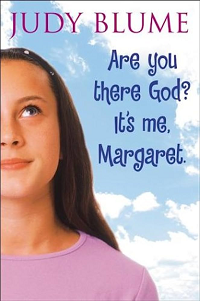
Are You There God? It’s Me, Margaret by Judy Blume
Once a staple on banned books lists, Judy Blume’s most famous novel has been teaching preteens about puberty — including menstruation and boob exercises — since 1970. Are You There God? It’s Me, Margaret was far ahead of its time, being one of the first children’s books to show an interfaith family on the page, and — along with Lois Lowry’s Anastasia Krupnik — depicted a child allowed to make up her own mind about which religion she wanted to follow.
The Cat Ate My Gymsuit by Paula Danziger
Fat protagonists are hard to come by in any age category. When you do find them, they’re often cast in stories about their weight loss journeys. Not so in The Cat Ate My Gymsuit: a 1974 novel in which Marcy, a young, fat teen, comes to terms with her father’s verbal abuse and emotional unavailability. Also worth mentioning here is the First Amendment-related plot, which sees Marcy fight for the reinstatement of a beloved English teacher who was fired for not saying the Pledge of Allegiance.
His Own Where by June Jordan
This lyrical 1971 novel centers on two Black teenagers, Buddy and Angela, whose terrible living situations prompt them to run away together. Author June Jordan’s commitment to writing in Black English extended to this, her only YA novel. Unconventional at the time for both its poetic style and its use of African American Vernacular English, His Own Where was lauded by no less than The New York Times and the American Library Association upon its publication and became a National Book Award finalist in 1972.
Deliver Us from Evie by M.E. Kerr
Deliver Us from Evie was the first book I read about another queer AFAB person. In the grand tradition of the so-called problem novel, however, the story here really centers around Evie’s younger brother, Parr. Still, M.E. Kerr’s novel gave us a butch AFAB person who didn’t need to change herself, and it portrayed a romantic relationship between two teen girls as acceptable. I don’t remember a lot of books I read when I was a pre-teen, but this one has always stuck with me.
Finding My Voice by Marie Myung-Ok Lee
According to Paperback Crush, Finding My Voice was “the first teen novel released by a major publisher with a contemporary Asian American protagonist by an Asian American author.” Originally published in 1992, the novel centers on Ellen: a Korean American girl living in a majority-white midwestern town. When she falls in love with a popular white boy, Ellen finds herself torn between her immigrant parents’ expectations and the peer pressure from her non-immigrant classmates. Stories about the American-born children of immigrants straddling identities are much more common today — thanks in part to the popularity of Finding My Voice.
The Best Little Girl in the World by Steven Levenkron
Discussions about what it means to have a healthy relationship with food abound today, but Millennials and Gen-Xers know it wasn’t always like this. Five years before Karen Carpenter’s death made “anorexia nervosa” a household phrase, Steven Levenkron’s The Best Little Girl in the World gave readers a look at the world through the lens of disordered eating — and exposed just how horrific the ensuing weight loss can be.
Hairstyles of the Damned by Joe Meno
Pure Sunshine. Polly. Nick & Norah’s Infinite Playlist. The teenage dirtbag ruled YA in the 2000s, making those of us who just wanted to spend every day in bed and every night at a dive-bar concert feel very, very seen. Published in 2004 and set in the punk scene of late ’80s, early ’90s Chicago, Hairstyles of the Damned was an emo Millennials’ Catcher in the Rye.
The Legend of Tarik by Walter Dean Myers
I’ve talked a good bit here about just how rare it was to see a YA protagonist of color in the 20th century. Even rarer? A YA fantasy protagonist of color. That’s exactly what Walter Dean Myers gave readers in The Legend of Tarik. Here, a kidnapped African boy completes his hero’s journey against the backdrop of medieval Spain. Although it’s out of print today, used copies are fairly easy to come by. Still, many readers would welcome a reprint.
The Lesser Blessed by Richard Van Camp
Finally, there’s The Lesser Blessed. This is a powerful coming-of-age story about a First Nations kid growing up in rural poverty, written by a First Nations author — a rarity today, but even less common when it was published in 1996. Tłı̨chǫ Dene author Richard Van Camp’s novel follows Larry, a Dogrib teenager living in Northern Canada at the height of the AIDS epidemic.
Want more classic YA books? Check out this list of the best YA books of all time. We’ve also got some queer YA classics for you, and a look at YA reads dealing with intense subject matter.


